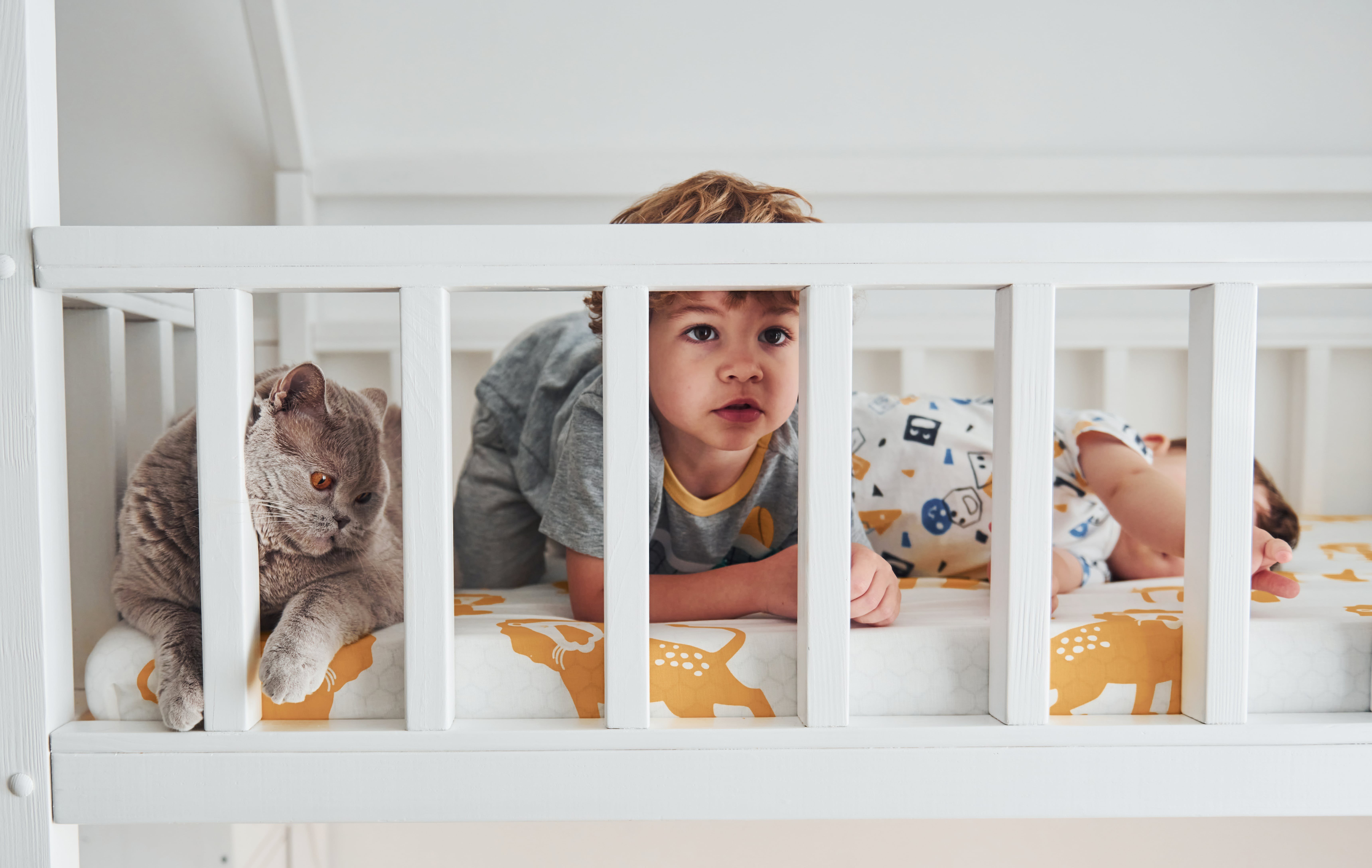Bedside Sleeper Cot
A bedside sleeper cot (also known as a bassinet) fixes to the side of your bed to ensure that your baby is close enough to be able to enjoy nighttime feeding, but in their own bed. Our mums love how they are easy to reach, and can also pivot the sides and drop them to get closer.
Safety
A bedside sleeper cot lets newborns to be safely within reach of parents' beds for nighttime feeding, comforting and monitoring without exposing them to the dangers associated with bed-sharing (which could lead to Sudden Infant Death Syndrome). The cots are made to conform to NHS guidelines for co-sleeping and are recommended by childcare experts such as director of the Mother-Baby Behavioural Sleep Laboratory Dr McKenna.
They also help promote healthy attachment and breastfeeding by keeping babies close. simply click the up coming post can help them achieve milestones in their development. Parents should search for bassinets that are easy to clean and safe to use and are certified by a trusted organization like JPMA.
In 2023, ASTM updated its version of the bedside sleeping voluntary standard F2906 in response to newer models that convert an infant bassinet to a bedside sleeper, by lowering one side rail to an adult bed, which allows some areas of the lower side to be elevated height above the mattress, which poses an increased risk for entrapment. The CPSC direct final rule incorporates this 2023 revision with reference to the existing mandatory standards under section 104 of Consumer Product Safety Improvement Act of 2008(CPSIA) for durable baby or toddler products which have been in use more than 180days and is expected to reduce the chance of injury.
Be aware that a bassinet or bedside sleeper, should not be used in conjunction with pillows or blankets. This can pose an obstructing risk since young children aren't able to raise their heads enough to remove them from soft objects and a reclined position could cause the head to tip forward, blocking their airway. Always place your child on their backs while using a bassinet, crib or play yard. Use an appropriate fitted sheet that meets the federal requirements.
Convenience
It is important to keep your baby close to you during the night. This creates bonds between newborns and parents. Bedside sleeper bassets are secured to the sides of your mattress and allow you to easily reach your baby for feedings, diaper changes and comforting in middle of the night. We looked for models that had mesh sides that were translucent enough to see through, so you could monitor your baby without needing to leave the bed.
You should make sure that the bassinet meets the US Consumer Product Safety Commission's (CPSC) requirements and is safe for babies. You should choose an infant bassinet that has a large base and a sturdy attachment system. A comfortable mattress is crucial as well.
Look for a model with a manual rocking function that's gentle on your baby and can help them sleep. Some models have tilt features which can be beneficial for infants suffering from reflux or colic. However, this should only be used under the advice of a doctor or health care professional.
Some bassinets include a mattress while others require you to purchase one separately. Make sure you purchase one that is made to fit your bedside sleeper bassinet, as second-hand mattresses may be too soft and carry a risk of SIDS. You'll also have to invest in a comfortable fitted sheet and muslin blanket to your baby. Be bedside crib travel to check the fabric lining. The foam mattress are machine washable to make cleaning easier. A storage shelf or basket can be a useful feature to store essentials such as nappies, clothes, and muslins. There are models that have wheels to help you move it around the house.
Support for breastfeeding
If you decide to breastfeed, a cot that sleeps at your bedside will help you maximize your evening feedings. Attached to your bed you can reach across to feed your baby once they wake up. The cot's side can be raised to create a bed for side-by side sleeping. Some models also tilt to accommodate reflux.
The curved sides make it easy to see and lift your baby up for a feeding. They won't roll off the side. Some bedside sleeper cribs have an automatic rocking feature that will calm your child and help them to fall asleep faster after eating.
If you want to keep your baby clean, a cozy bedding and fabric that can be machine-washed are helpful. Some models have gentle vibration and rocking functions which can help soothe your baby to sleep. Breastfeeding mothers will also appreciate having lots of storage.

It is convenient for nursing mothers to share a bed with their babies. This also allows them to form a close bond while they sleep. Research has shown that infants who breastfeed and have a shared space to sleep have better outcomes than infants who are fed through bottles. It is important to be aware of the dangers and pitfalls of sharing an infant's bed and to choose a mattress that is safe for your baby.
Some beds have soft surfaces or padding along their edges, which could cause your baby to become entrapped. Also, be aware not to allow the sleeper in bed slide backwards, forming an opening that your baby may crawl into or roll over.
If you're concerned about the safety a mother or baby who sleeps next to you, consider attending an LLL meeting. Talk to a Sleep Leader about your child's sleeping habits of your child. They can help you create an environment for sleep that is safe for your baby, and explain the risks of SIDS. They can also educate you about the'sweet sleep' of nursing mothers, which has many of the same protection factors as breastfeeding.
